Some of the links in this post may be affiliate links.
Syngonium podophyllum, or Arrowhead Vine, makes for an incredibly satisfying houseplant! It is relatively easy to care for, grows very quickly with good care, and is super easy to propagate!
If you don’t provide good, consistent care, it can look a bit ratty. Or over time, it may become unruly like my
Keep reading because I will show you all my best
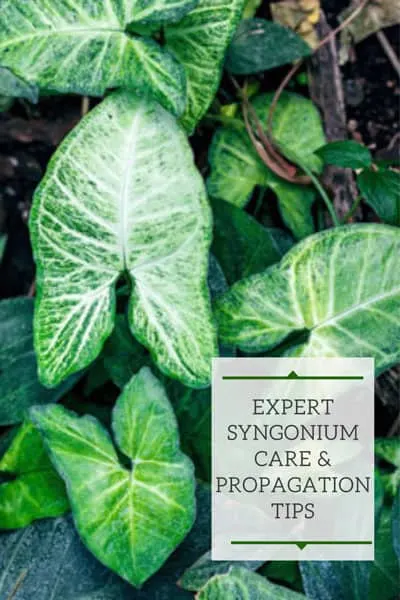
Table of Contents
Syngonium Care
Many people think that there is something wrong with their plant when it starts to stretch out and vine, but the fact is that these plants ARE vines in nature!
They will start growing at the base of a tree and climb up at least a few feet. We are used to seeing juvenile leaves, but the mature leaves will look much different and have deeper lobes.
These plants are native to rain forests ranging from southern Mexico through Central and South America. As you can imagine, they like warm temperatures so try not to let these plants get below 60F. They will simply sulk if it gets colder than that.
When you purchase a
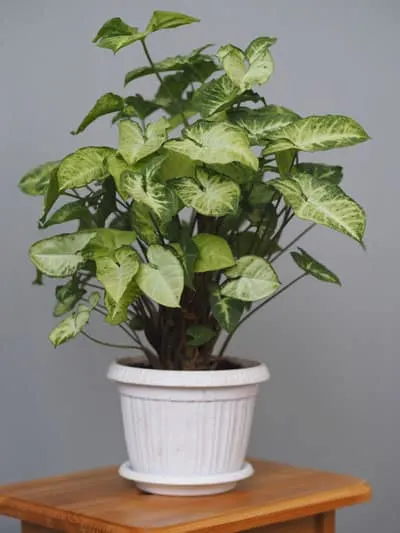
1. LIGHT
These are often touted as “low-light” plants which is a pretty confusing term. I find that
Placing your plant right in front of a Northern or Eastern exposure window is ideal. Morning sun is gentle enough in most areas. Avoid extended periods of direct sun, especially if you live in areas that have really hot summers.
If you have very sunny Western or Southern windows, you may want to set your plant back a bit so that it doesn’t get too much direct sun.
2. WATERING
I follow my standard watering practices for leafy tropicals. Always water thoroughly and completely until water escapes the drainage hole.
Then wait until maybe the top inch or so of the soil is dry before watering again. Don’t let your soil get completely dry.
It’s really as simple as that. So many people are scared of overwatering and there are a lot of houseplant watering myths out there.
Overwatering does not mean what you may think it means, so be sure to become an informed houseplant parent and read the blog posts I linked to after you’e done with this post.
What you read here is really ALL you need to remember when it comes to watering! Don’t overcomplicate it! Be sure to keep your plant in good light though, like I described above, otherwise you may be asking for trouble.
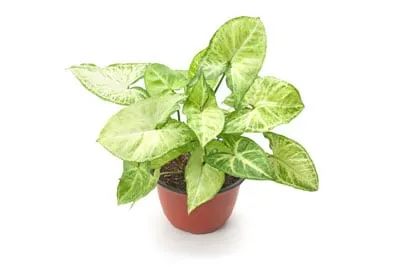
YELLOW LEAVES
If you let your plant dry out completely, and repeatedly, you’ll find that the lower leaves will start to yellow one by one until you’re left with a naked, bare vine with a tuft of leaves.
Try to avoid letting the soil dry out completely in order to keep as many leaves on your plant as possible. Sure, it is normal for some of the older leaves to yellow over time, but if you are negligent with watering, you will make the issue much worse.
There are other reasons too why houseplants get yellow leaves.
3. FERTILIZING
For my leafy tropicals like
I like to tell people that fertilizing is NOT a fix for poor plant culture. If you have been neglecting your plant and growing it in poor light, you have greater things to worry about than what fertilizer you are going to use.
Fertilizing should be a way to supplement your plant’s health after you have mastered proper culture (light, watering, etc.). Dyna-Gro Grow is truly amazing! I’ve been using it for a while now and have great results.
It is a premium, urea-free, complete fertilizer and I simply mix 1/4-/1/2 teaspoon per gallon of water and use it every time I water my plants from about late Winter through about October or so.
I stop fertilizing when the days get shorter throughout most of the Fall and Winter since plants simply aren’t growing much.
Why not give it a shot? You will notice a wonderful difference!
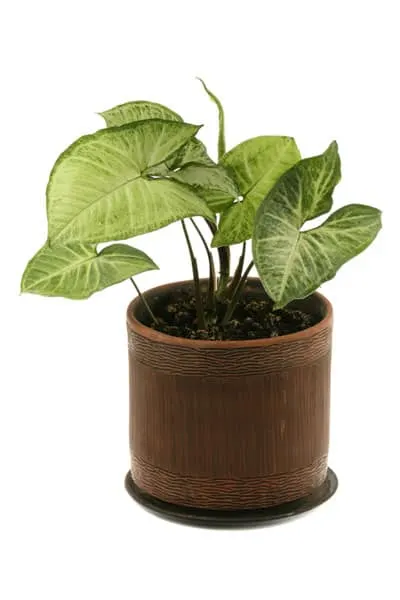
4. HUMIDITY
It makes sense that these plants love high humidity, since they grow in rain forests, but in most cases, you will be fine with average indoor humidity as long as you have good watering practices!
Good watering practices are much more important than providing high humidity, but if you can provide both (along with good air circulation), then it’s even better! This is true even for the “finicky” maidenhair fern that I’ve been able to grow very successfully!
I always run a humidifier in my sunroom during the months that our central heat is on. I talk about my favorite humidifier in my blog post on increasing humidity.
If you look closely in the photo below, you can see my
I later chopped that plant up and propagated it so I’ll show you how I did that soon!
5. POTS & SOIL MIX
For all my leafy tropical plants, I use the following soil mix which is a great, well-draining all purpose mix!
You can easily get everything on Amazon and I like to use:
3 parts of Miracle Gro Potting Mix
to 1 part of Perlite.
Mix it all up together, and you’re golden!
Remember that if you purchased a plant in a small pot at a nursery, chances are you may need to repot it (always allow at least a couple weeks of adjustment at home before you repot anything).
Small pots often dry out very quickly, so keep this in mind!
When you do repot, a good rule of thumb is to only repot into a pot that is one size bigger than the old pot. For example, if you have a plant in a 4 inch pot, don’t go any larger than a 6 inch pot.
And always choose a pot with a drainage hole!
If you don’t want to bother mixing your own, I HIGHLY recommend the Rainforest Soil Blend from Oh Happy Plants. These are AMAZING, sustainable potting mixes and you can use them straight out of the bag. If you use my link, you will automatically receive 10% off at checkout on any products.
6. PRUNING
Depending on what your goal is for your plant, you may or may not want to prune.
If you desire to have a bushy plant, don’t be afraid to prune your plant back. This will shorten any vines that are starting to lengthen, and help encourage new growth so it can remain more compact.
And if you do prune, you also have the benefit of being able to propagate your plant to make more! I’ll show you how I propagated my variegated
If you prefer not to prune your plant, know that the vines will extend and get long. At this point, you can display them in a number of ways:
- You can use your
Syngonium in a hanging plant. The vines will eventually reach the floor so you’ll have to prune at that point anyway!
- You can let your plant’s vines ramble on your plant shelf, or dangle off your shelf.
- Or, one of the most interesting ways would be to give your plant a moss post and let it climb like the specimen below! Check out my DIY Moss Post tutorial to make your own!
7. Propagation
Now comes the fun part! This is one of the easiest plants to propagate by cuttings. It roots very quickly in water.
One of my readers approached me once with a question about her plant. All of the lower leaves were gone and she didn’t like the bare look of her plant.
I showed her exactly where to cut her plant to quickly make cuttings to replant.
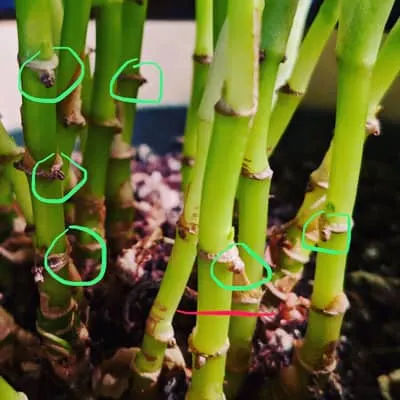
You can see on each of the vines, there are roots already growing at the nodes (where the leaves meet the vine). In this case, the leaves had yellowed from the plant drying out too much.
You would simply cut right below any of these nodes, indicated by the red line in the photo, and place the cuttings in water.
Just be sure to include one or two nodes (circled in green in the photo) in water in your propagation vessel. Keep your cuttings shorter and make sure that each cutting has one or two leaves.
Be sure to change the water weekly at least in order to keep it fresh, and remove anything that may have rotted.
My variegated
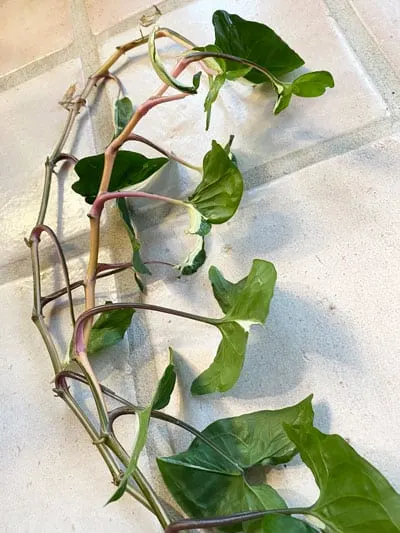
I love the beautiful variegation on the leaves.
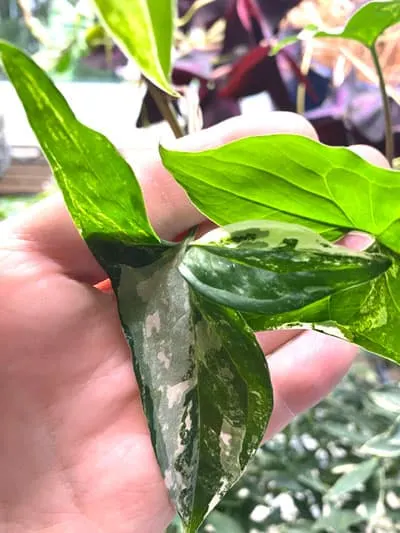
Following the same process that I described above, I took multiple cuttings, and placed them in a vase of water.
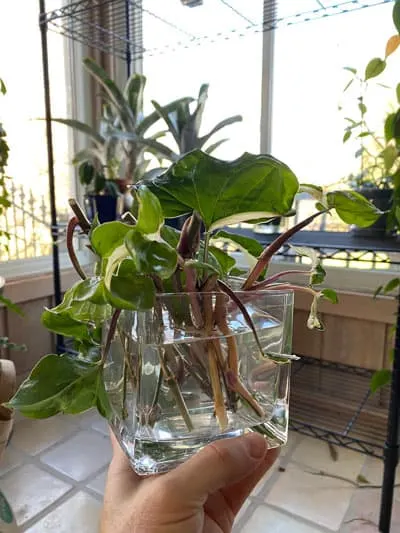
Pretty soon after you take the cuttings, the roots will grow fairly quickly from the nodes (where the leaves meet the vine).
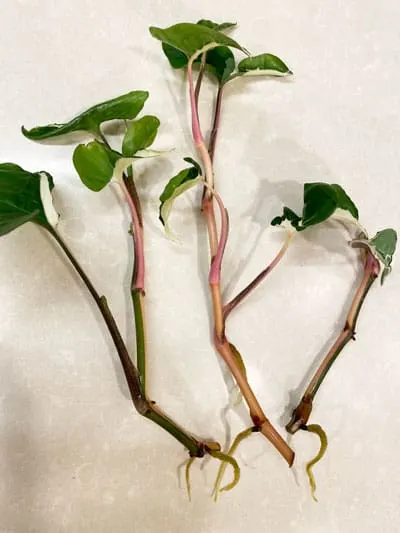
Once the roots start growing, go ahead and pot them up! If you want a nice and full plant, place them all in one pot and you will have a nice specimen in no time!
Before we go, here is another example from one of my reader’s plants.
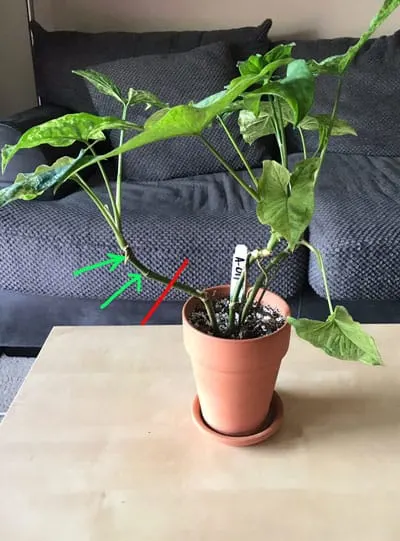
My reader didn’t like the look of her plant anymore above and prefers her Arrowhead vine to be bushier, so I demonstrate where to cut the vine (red line) and the two points (green arrows) that will root in water.
For more details, check out my post on propagating Syngonium.
Syngonium Varieties
Other than the ones I’ve already shown, here are some other varieties that are available.
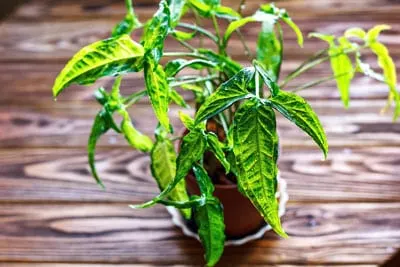
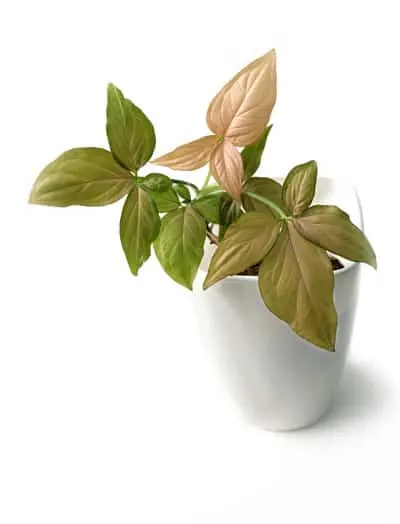


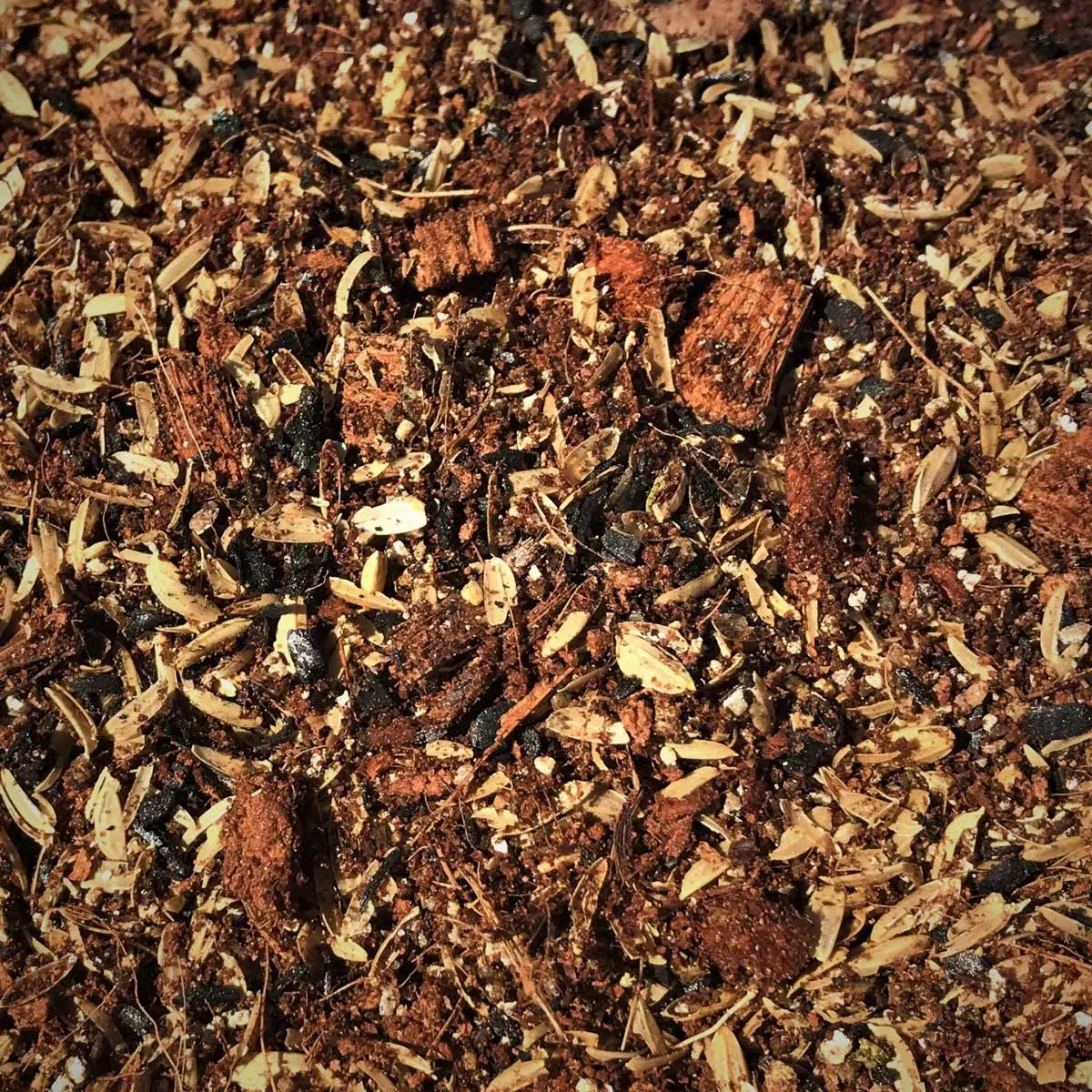
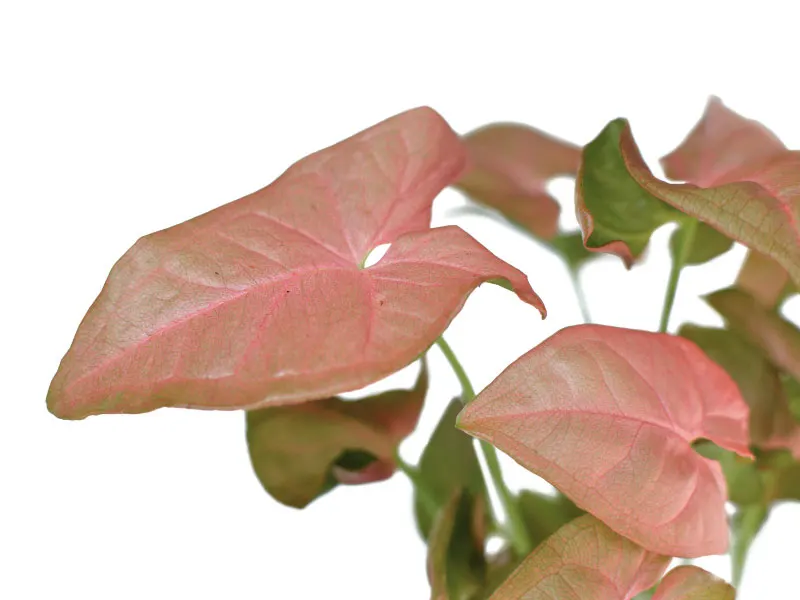
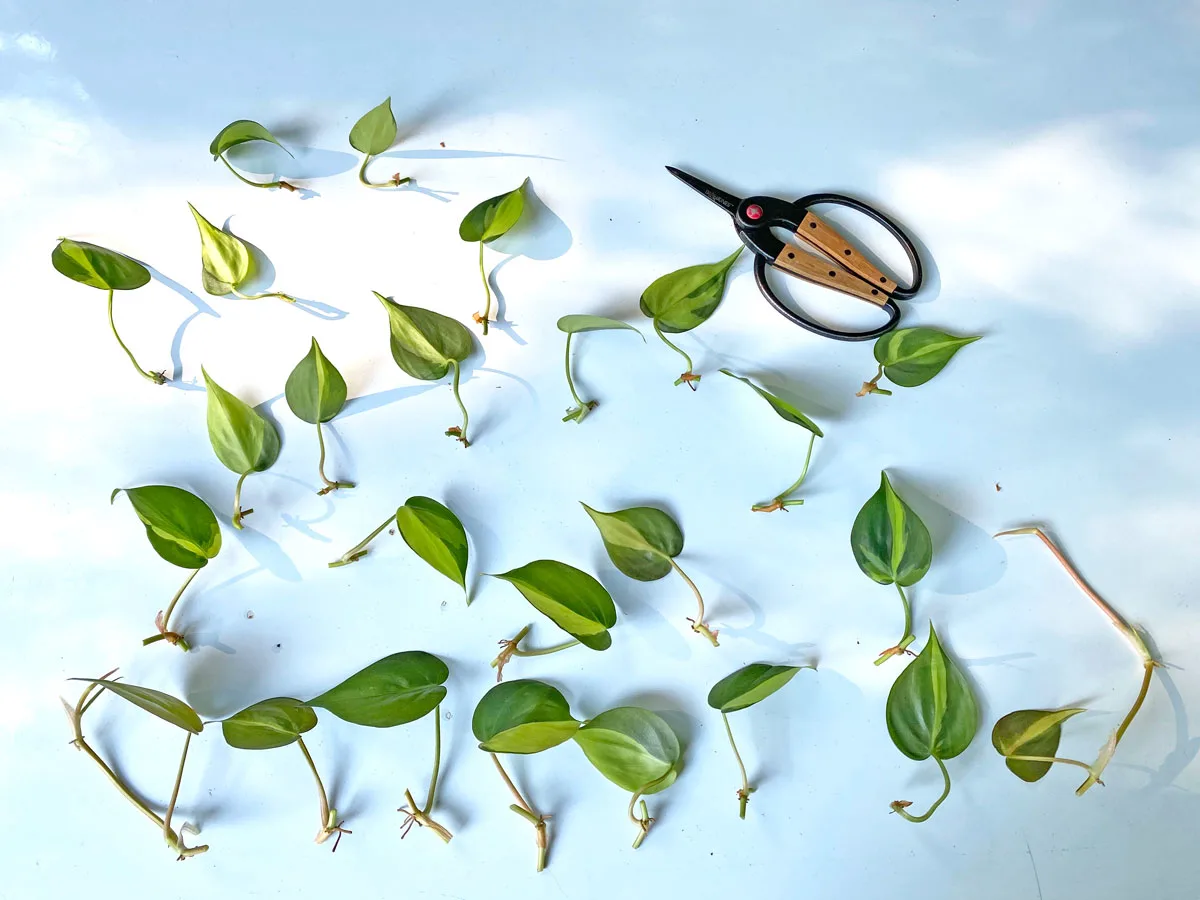
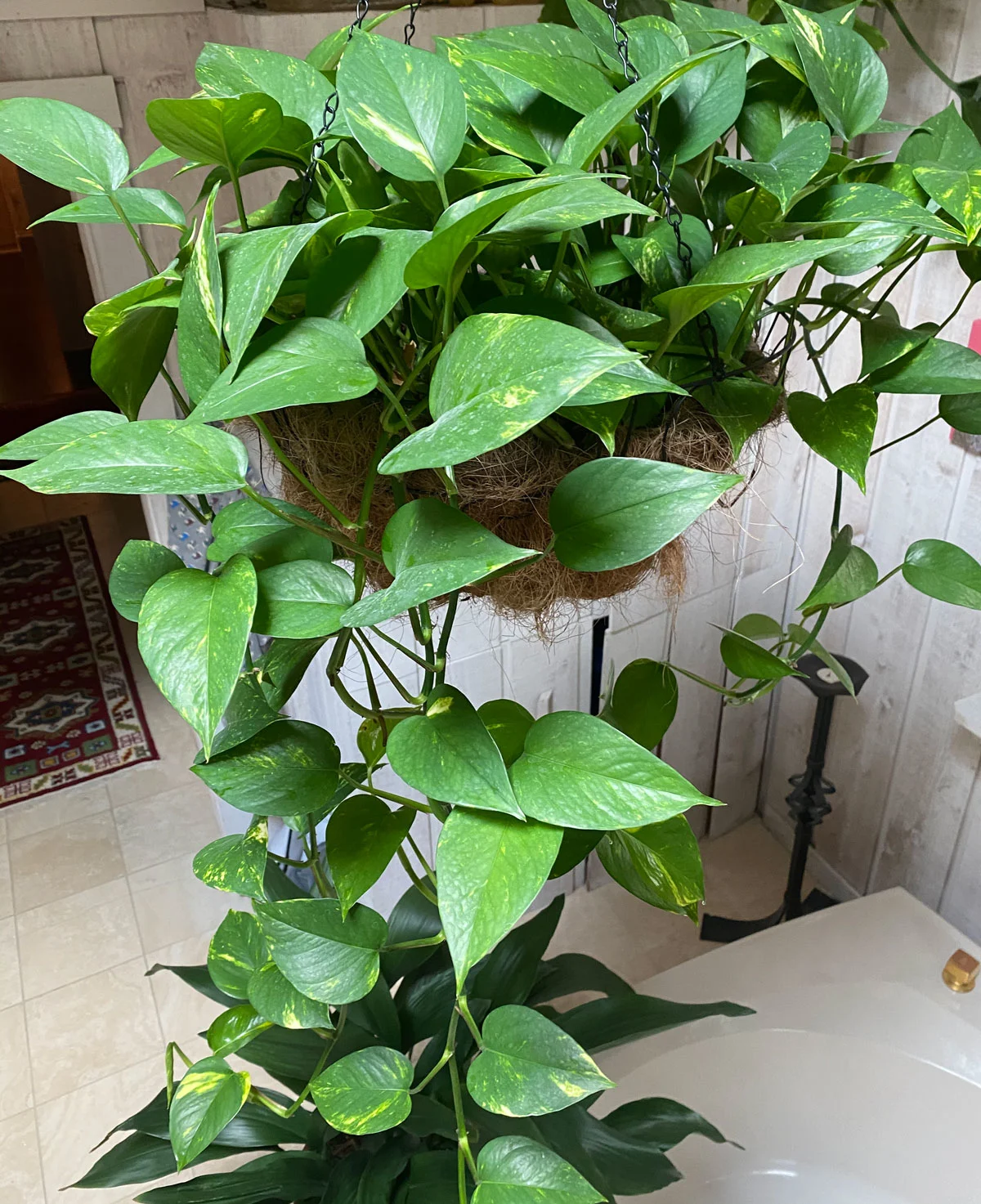
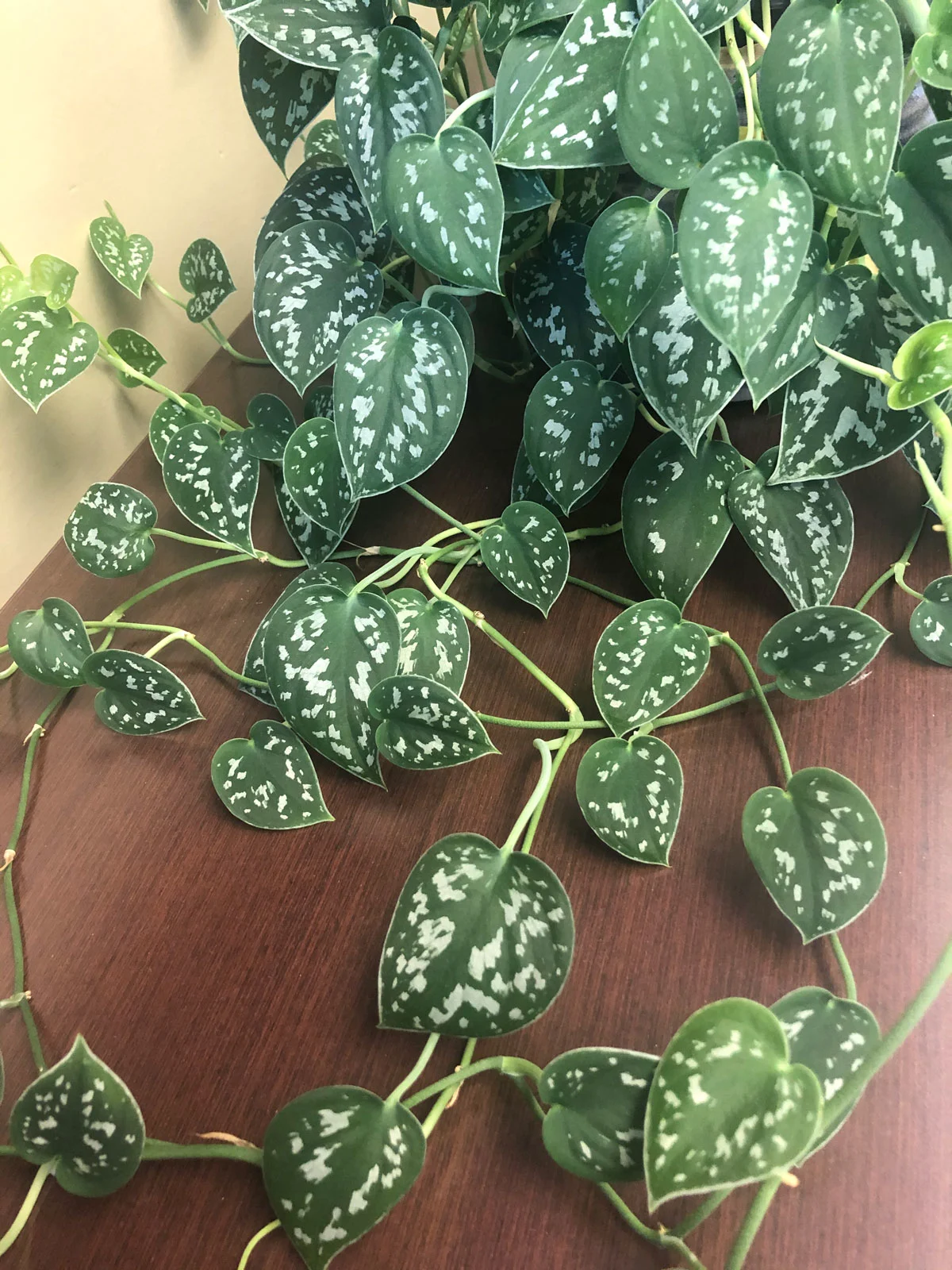
Joanne Hallis
Sunday 11th of August 2024
I have a Sansevieria that is variegated. It has two vines one is great, the other vine has the leaves growing out curled up. Not straight like the other vine. What makes that happen. They are both (vines) growing really well. Big thick vines. Can you help me?
Abby
Saturday 10th of February 2024
Hello Rafaelle, I love plants and have managed to keep quite a number alive....except Syngoniums in temperate zones. In the tropics I have no proble.s at all, but here in the temperate regions they always decli e and die. I just don't understand it.
Raffaele Di Lallo
Sunday 11th of February 2024
Sorry to hear that Abby! I assume you're growing them indoors? What kind of issues do you have?
Cheryl
Monday 14th of November 2022
I repotted my plant water it correctly but the leaves are getting brown spots on them. What did I do wrong. I did not use to big of a pot. I'm used to growing outside but now in apt. I do mist regulary and have them in low bright light, no sun
Raffaele
Monday 14th of November 2022
I would stop misting, and if there are not a ton of leaves with spots, go ahead and cut them off.
Heryanti Hamim
Thursday 21st of July 2022
Greetings from Singapore! Great post! I just bought a syngonium variegated and it has a lot of aerial roots! My question is can I just snip between nodes and plant in soil or should I place in water and wait for roots before doing that?
Thanks much! 😊
Raffaele
Thursday 21st of July 2022
You can definitely place them right in soil. I just did this recently in fact, but you'd have to keep the potting mix moist and keep the humidity high while it is rooting. Good luck!
H Rose
Friday 27th of May 2022
I bought some soil specifically for anthuriums. I could have made it but I have limited space. Do you know if that soil will work for syngonium.
It is composed of:
Horticultural charcoal, sand, peat moss, perlite, fir bark, and lime
Thank you!!!
H Rose
Saturday 28th of May 2022
@Raffaele, thank you!!! I have difficulties of when I should water. At least it’s still alive! I also have a Pixie Syngonium so hoping to keep that going too. Can they be under a grow light or is that to much? Thanks again!
Raffaele
Friday 27th of May 2022
I don't see why not! it's just a matter of maintaining the proper moisture level. You should be fine!